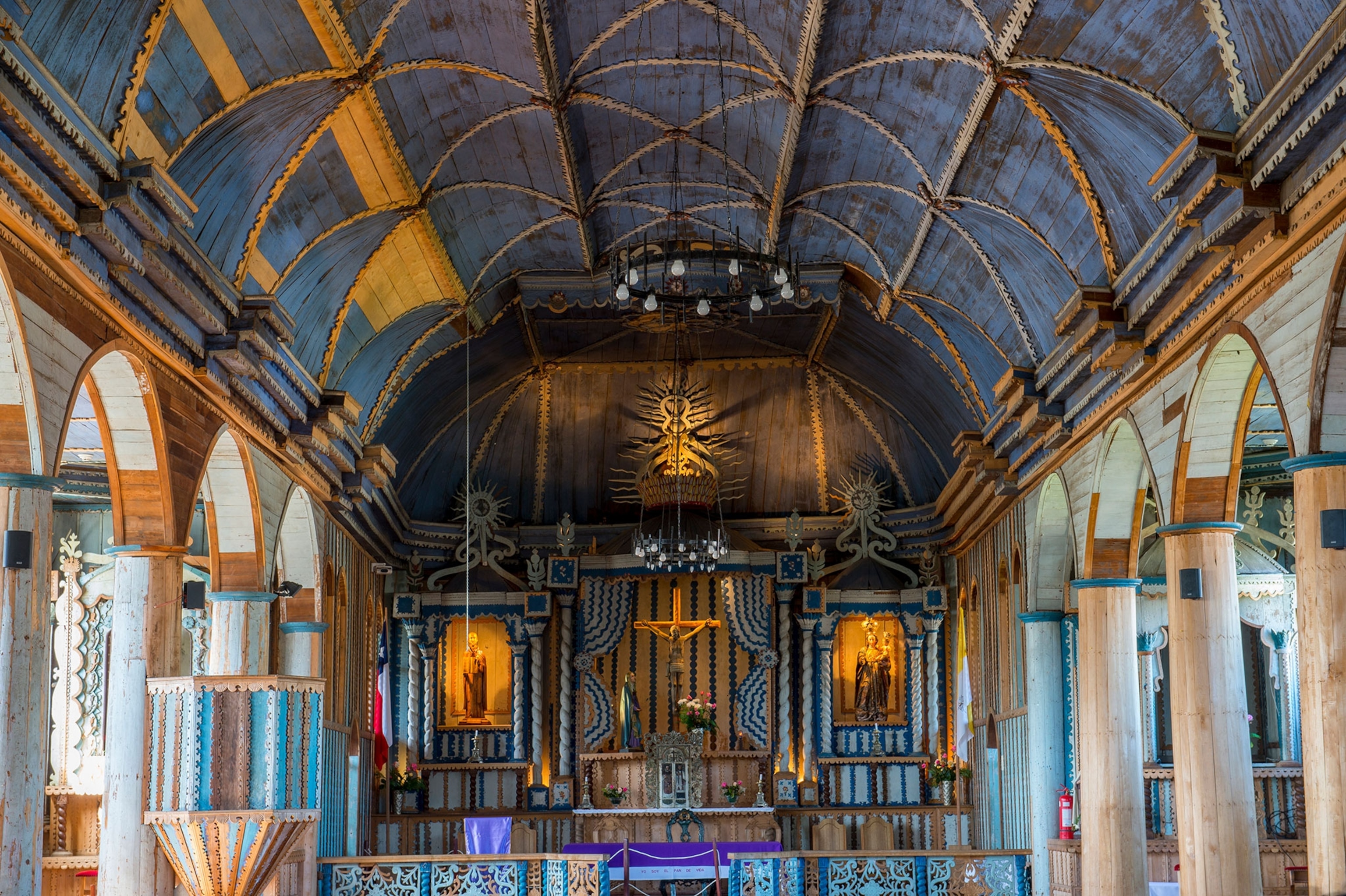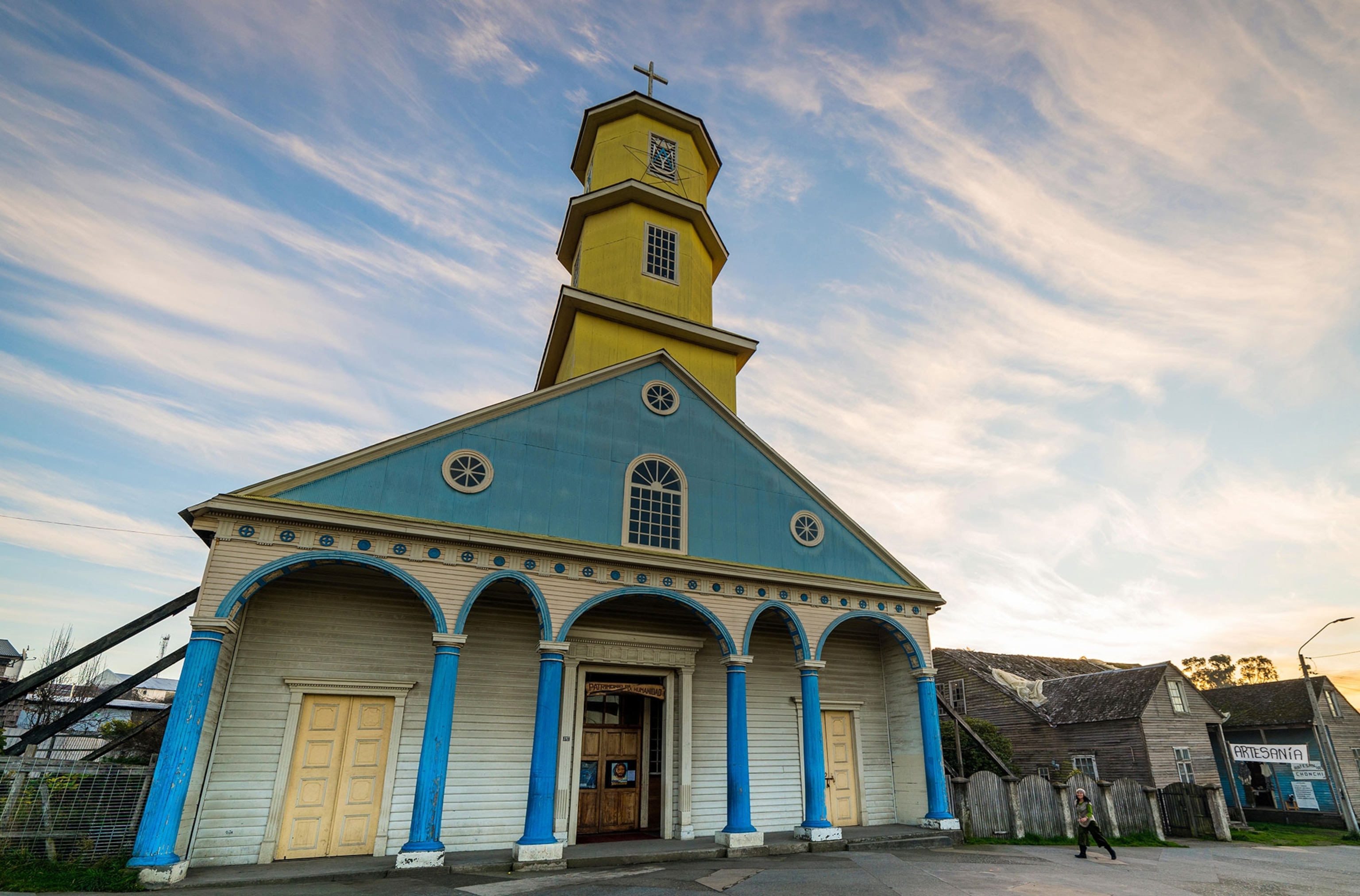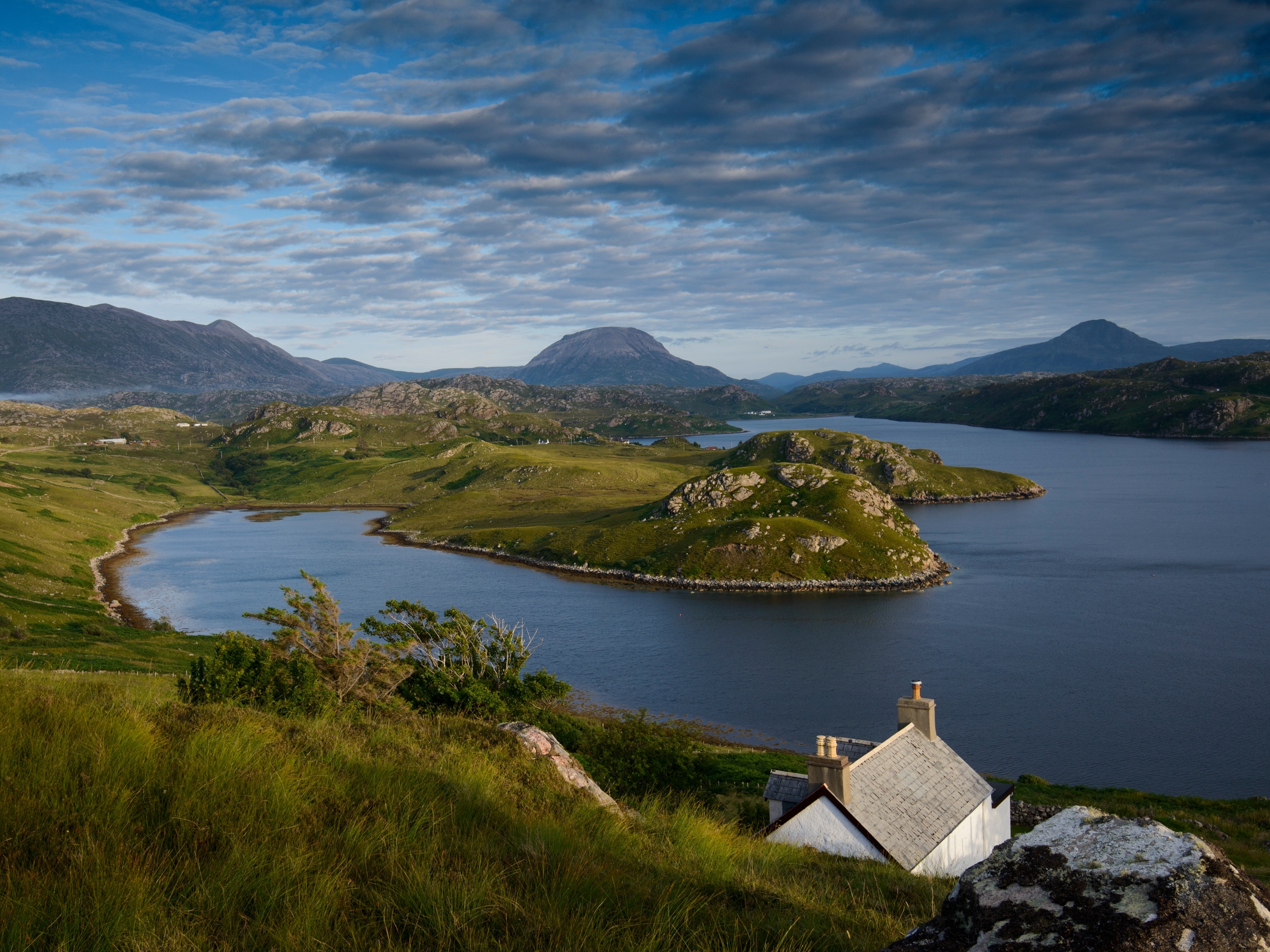
These Centuries-Old Nailless Churches Are Still Standing
Out of 70 churches built using this technique, 16 survived the centuries.
Off the coast of Chile, the archipelago of Chiloé rises from the Pacific—a region distinguished for its rolling countryside, large wool-producing community, and the birthplace of the country’s salmon industry.
The arrival of the missionary Jesuits in the 17th century brought a distinct architectural style of churches. Combining building techniques from Spain with Chiloé’s ancestral carpenters’ wooden boat construction, they fashioned nailless churches.
In place of iron nails, reinforced wooden joints hold the buildings in place, mimicking the techniques used for the construction of ships. Unlike classical Spanish colonial buildings that used Baroque and Renaissance architecture and imported materials from Spain, the churches are made from locally sourced Larch and Cypress wood from the islands. This all-wood technique is believed to have provided insulation from the southern Chilean chill.


Out of 70 churches that were built using this technique, 16 churches survived fires and natural disasters over the centuries, including the 1960 earthquake and tidal wave. The churches were built to withstand such disasters. The Jesuits, who spread Christianity throughout Chiloé, navigated the territory by sea, and the churches were built on high ground to act as beacons for navigation. Their elevation and south-facing entrances protected the churches from rain and flooding.
The standing churches—Achao, Quinchao, Castro, Rilán, Nercón, Aldachildo, Ichuac, Detif, Vilupulli, Chonchi, Tenaún, Colo, San Juan, Dalcahue, Chellín, and Caguach—were inscribed as UNESCO World Heritage sites in 2000. They are known for their vibrant facades, like the bright yellow Church of Castro or the striking blue Church of Chonchi.
Their continued preservation depends on a group of dedicated local volunteers. Bernardita de Lourdes Oyarzun Vera, for example, volunteers at the Church of Achao—the oldest remaining church, built around 1740. Vera is one of several women who oversee the security and daily access to the Chiloé churches. Vera reports construction deficiencies and weak areas in the joists or podiums to the Chilean School of Architecture in Wood.
- National Geographic Expeditions
“It was a personal decision to volunteer as a commitment to my land and my culture,” Vera says. “That’s how it works in Chiloé, anyone can be a volunteer, as long as they are willing and enjoy it.”
Another volunteer, Marta Edilia Aquintui Aquintui, has lived for 34 years next to the Church of Colo, distinguished by its tower with two octagonal drums and a porch with three vaulted arches. “Before I became an official volunteer, there was no key to the church so my husband and I were the ones who watched who went in,” she says. “I love overseeing the church because it is our heritage, and it unites us to people as believers.”





